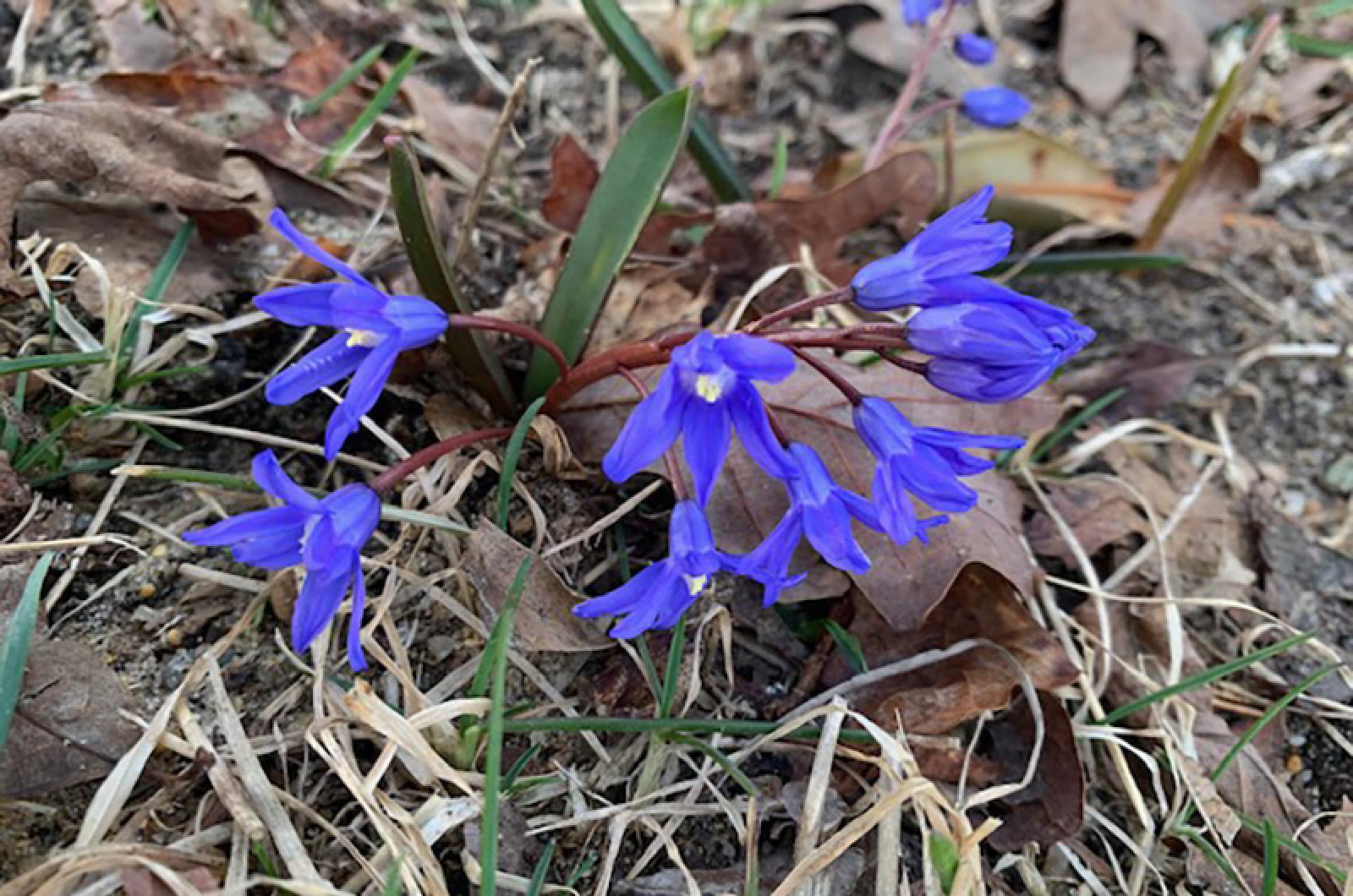Don’t squash the squills.
Though they be little, you won’t likely step on them since it is hard to miss their vividly-colored vibrant color. Beyond bright blossoms, squills can be considered fatally flawed or pharmacologically fortunate.
These plants can kill and cure, depending on what species you choose and who is targeted. Squills, also known as scillas, are a group of bulb-forming perennial plants from the family Asparagaceae (yes, the same family as your typical garden asparagus).
A mess of these early bloomers are showing their stuff around town. Thought native to faraway places, squills have found a home locally and become well-naturalized in our country. A favored variety, Siberian squill, was flaunting its beautiful bold blue colors and nodding flowers last week. Also called spring beauty, sapphire squill or wood squill, this plant has been awarded the honorable English Royal Horticultural Society’s Award of Garden Merit.
As popular garden and yard plants, scillas, with their bulb-spreading nature, have colonized roadsides, yards and fields, and can be found almost anywhere. They partner well with other early spring bloomers such as crocuses, Galanthus or snowdrops, and glory of the snow, and are often used to create flowing flower areas as they easily survive and thrive in all types of habitats, soils and light. Scilla multiply and spread easily and need no special care. And, as an added advantage for survival, deer and rabbits take little interest in them for snacking and mealtimes.
Nor do many other creatures eat this plant, and it is in all of our and their best interests to avoid it. Squills are toxic to
dogs, cats and humans, and can be fatal if eaten. External warnings are given also, as skin irritations are possible for sensitive individuals.
However, there are also medicinal benefits associated with some species. While some sources cite the poisonous nature of these plants, others hold them up as healing rather than harming. Consider the source and the species, and don’t experiment on yourself or others.
Sea squill or Red Squill is a remedy. Don’t look for this variety here, as you won’t find it on our shores. It is called a heart-tonic and used in Europe and other places for its cardio-efficacy, approved in 1985 in Germany for heart conditions.
Its history of healing goes back much further, when oxymel of squill was developed by Pythagoras in the 6th century BC. Healers throughout history, including Theophrastus, Epimenides, Dioscorides, Homer and Pliny, employed squill concoctions, mixing the plant with vinegar and honey to treat a variety of heart and breathing ailments. Components of this plant are still used as an ingredient in some cough syrups.
Conversely to its healing potential, this plant is also known for its fatal effects, as one of the earliest pest control methods. Prepared properly, red and white squill were first used in the 13th century as a rodenticide, and continue to be so employed right up through modern times. Rats, clearly smarter than their human baiters, learned to avoid this compound and since 1989 it has not been sold in the United States for pest control.
What an incredible squill set — health, death and a carpet of color to create a very welcome spring palette.
Suzan Bellincampi is director of the Felix Neck Wildlife Sanctuary in Edgartown, and author of Martha’s Vineyard: A Field Guide to Island Nature and The Nature of Martha’s Vineyard.







Comments
Comment policy »